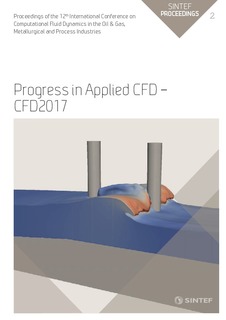| dc.contributor.author | Røkenes, Kjersti | |
| dc.contributor.author | Panjwani, Balram | |
| dc.contributor.author | Lund, Berit Floor | |
| dc.contributor.author | Samseth, Jon | |
| dc.date.accessioned | 2017-11-12T11:26:53Z | |
| dc.date.available | 2017-11-12T11:26:53Z | |
| dc.date.issued | 2017 | |
| dc.identifier.isbn | 978-82-536-1544-8 | |
| dc.identifier.issn | 2387-4295 | |
| dc.identifier.uri | http://hdl.handle.net/11250/2465638 | |
| dc.description.abstract | Kongsberg Digital (KDI) is currently developing a decision support system for wind farms (Kongsberg EmPower). The objectives of Kongsberg EmPower are to optimize the total power production from a wind farm, forecast the power production and monitor the performance and condition of the wind turbines. Power production from a wind farm depends on the flow field around the wind turbine, which is highly influenced by the interaction between turbine and terrain wakes. Furthermore, increased turbulence due to wake-wake interaction increases structural and fatigue loads on the wind turbine blades, leading to higher operational and maintenance (O&M) cost. An improved understanding on the wake-wake interaction is extremely important for optimizing the power production and for reducing the O&M cost. Performing extensive velocities measurements for an entire wind farm is time consuming and expensive. The traditional approach within wind research and industry has been to use full CFD models when complex flow phenomena have to be taken into consideration, but this is computationally demanding. On the other hand, simple engineering models are unable to capture the interaction of flow over complex terrain and wind turbine wakes. KDI and SINTEF are running a project to develop a fast response simulator with simplified representations of terrain effects and turbine wakes. In the proposed approach a pragmatic model for turbines and terrain wakes interaction is presented. Complex flow over a terrain is estimated with mass consistent model and wake from wind turbine is computed using well established wake models i.e. Jensen and Ainslie model. The pragmatic model for coupling the interaction between turbine wakes and terrain approach is presented. The results obtained from the mass consistent approach are verified with CFD using OpenFoam. | nb_NO |
| dc.language.iso | eng | nb_NO |
| dc.publisher | SINTEF Academic Press | nb_NO |
| dc.relation.ispartof | Proceedings of the 12th International Conference on Computational Fluid Dynamics in the Oil & Gas, Metallurgical and Process Industries | |
| dc.relation.ispartofseries | SINTEF Proceedings;2 | |
| dc.subject | CFD | nb_NO |
| dc.subject | OpenFoam | nb_NO |
| dc.subject | Wakes | nb_NO |
| dc.subject | Turbines | nb_NO |
| dc.subject | Terrains | nb_NO |
| dc.title | Modelling of interaction between turbines and terrain wakes using pragmatic approach | nb_NO |
| dc.type | Chapter | nb_NO |
| dc.description.version | publishedVersion | nb_NO |
| dc.rights.holder | © SINTEF Academic Press | nb_NO |
| dc.subject.nsi | VDP::Technology: 500 | nb_NO |
